Fundraising for Ukraine using crypto and NFTs
Exploring how the crypto community raised over $40m USD for Ukraine
Crypto Rabbit Holes is a space for me to slow down and pay closer attention to what’s happening and what I’m learning in the crazy, fast-moving world of crypto. If you aren’t subscribed, you can do so here:
Read Time: ~5 mins
In response to Russia's attack on Ukraine, many individuals and organisations within the crypto community have been channelling their energy and funds towards supporting Ukraine. The speed of response from the community has been inspiring - since February 24th, over $40m USD has been raised! That's a lot of money in a very short amount of time.
Looking at the collective effort of the crypto community shows us that crypto can be leveraged to create meaningful, positive impact. This piece explores how these funds are being raised - whether it's through:
direct crypto donations; or
non-fungible tokens (NFTs).
Note: all figures are taken at time of writing on 4 Mar 2022, and are listed in USD.
Direct Crypto Donations
One way individuals and organisations are supporting Ukraine is through direct donations with crypto. Two key benefits that crypto donations have over fiat donations is speed and transparency:
Speed: with crypto, funds can be sent instantly to anyone, no matter where they're located
Transparency: the flow of crypto funds is entirely transparent. This lets us see more information in real time, like: who has donated, how much they've donated and the total amount raised. For example, anyone can pull this information to create dashboards like this. The transparency also keeps individuals and organisations accountable for directing funds raised to the right places.
1) Ukrainian Government
One way direct crypto donations are being facilitated is via the Ukrainian government. Using Twitter, they announced that they'd accept crypto donations across the Bitcoin, Ethereum and Polkadot blockchains. The process is extremely simple and fast. Ukraine provides their wallet addresses, and individuals can immediately send funds over. No forms, no verification, no friction. In total, they've raised over $26m USD.
Interestingly, they later announced that a snapshot would be taken for an airdrop. This means that anyone who donates prior to a certain time (the time of the snapshot), will be recorded as being eligible for a reward (the airdrop) - something only made possible by the transparency of crypto.
Unsurprisingly, this announcement on March 2nd incentivised an immediate burst of new donations which you can see on the graph below.
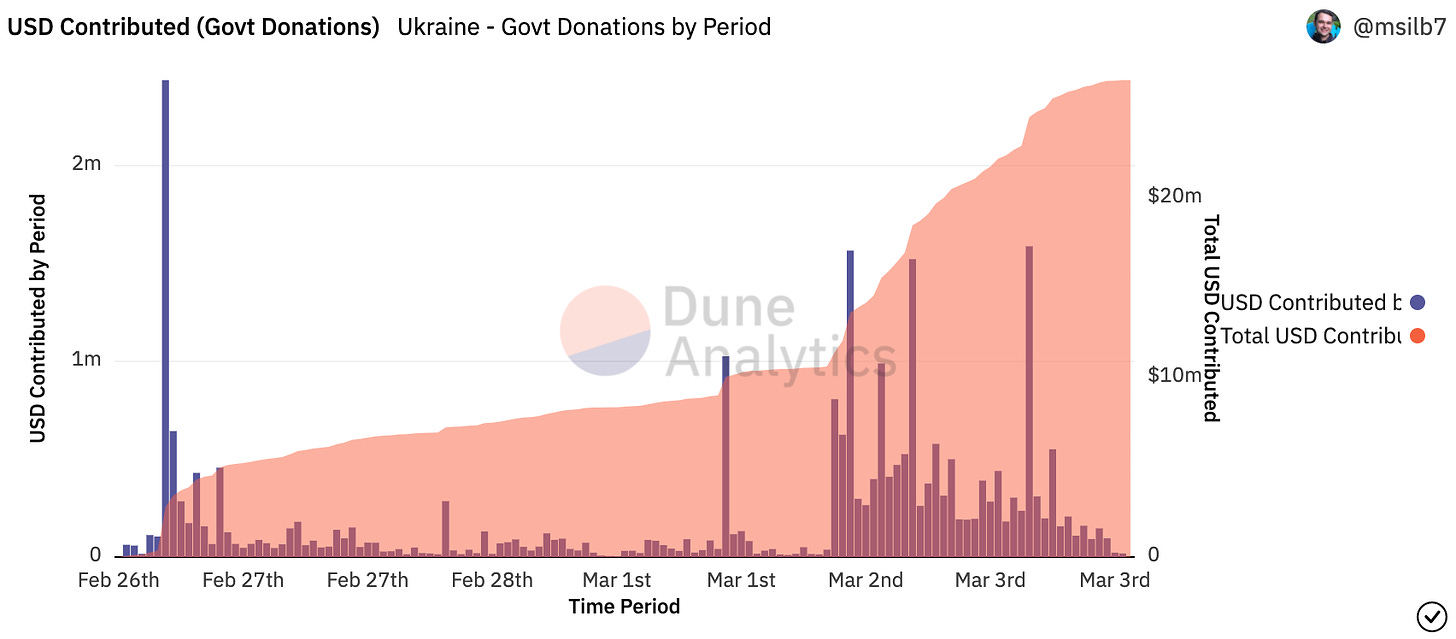
But in a turn of events, the Vice Prime Minister of Ukraine posted an update the following day, saying that the airdrop was cancelled. Instead, NFTs would be launched to support the Ukrainian Armed Forces. It’s all pretty crazy.
2) Endaoment
Another source of the donations is from Endaoment, an organisation which turns donations of crypto into cash for non-profits, making crypto philanthropy quick and easy. With their existing infrastructure, they quickly set up a fund for Ukraine which has raised over $570k. These funds are then split equally between 7 organisations.
3) Unchain Fund
Finally, Unchain Fund is a "crypto-native fundraising campaign" supporting humanitarian aid in Ukraine including migration support, medicine, protective equipment and food. They allow individuals to donate digital assets across many blockchains, including those which weren’t listed as an option by the Ukranian government. This has allowed them to tap into more communities, and raise over $2m USD.
One point to note is that the team behind Unchain Fund has set up the donated funds to arrive in a multi-signature wallet, controlled by 9 individuals. Think of this as a bank account controlled by 9 people. This reduces the risk of bad actors because the funds can only be moved with a majority decision. It's a great example of how crypto tools enable individuals, who may not know each other, to trust one another.
Beyond direct crypto donations, NFTs have also been used to crowdfund donations.
NFTs
With NFTs, creators are able to leverage the strength of their communities, and create a more rewarding and enjoyable donating experience. By providing collectors with an NFT in return for their donation, creators are able to incentivise greater participation. It's the crypto equivalent of a charity auction or charity ball. For example, the NFT can be a cool way to signal an individual's support for Ukraine, or it can also be a unique opportunity to collect their favourite artists' works at an approachable price. Here are a few examples.
1) Jack Butcher
Jack Butcher, known for his visualisations of complex ideas, created an NFT called Sovereignty. It's an image of the Ethereum logo, with the colours of the Ukranian flag. The NFT, which has a supply of 1000, can be purchased by individuals for 0.10 ETH (~$280 USD).
So far, 170 have been sold, raising almost $50k USD which Jack has directed to Endaoment's Ukraine fund. It's a great example of how individuals can leverage their unique skillsets and established fan bases for philanthropy.
2) TIME Artists for Peace
TIME Magazine organised an NFT collection called Artists for Peace. The collection features 1/1 artworks (where the supply is limited to 1) from 59 artists. These were auctioned off, raising ~$350k USD. Artists and those who are part of TIME's NFT community are able to vote on which charities the funds will be distributed to.
Given these are 1/1 artworks, TIME was able to capture the full willingness to pay of each artists' biggest fans, with some paying more than $20k USD.

3) RELI3F
RELI3F, a "web3 initiative to provide global humanitarian aid" had a slightly different approach to TIME Magazine. Rather than 1/1 artworks, RELI3F sold artworks from 37 artists with 200 editions each, for 0.05 ETH (~$140 USD) each. With a larger supply and more accessible price point than TIME, a larger number of individuals were able to participate.
This sold out within minutes, raising over a $1m USD. Beyond the initial sale, RELI3F also takes a 10% royalty from secondary sales, which has already generated almost $180k USD of additional funding.
The speed with which RELI3F launched shows the power of communities. If you look closely at the timeline of events here, you'll see that:
Andrew Wang posed a question to his followers, asking them how they could leverage their resources to support the people of Ukraine
A group chat was formed and 24 hours later, RELI3F was officially introduced to the public 🤯
9 hours from the announcement, the project was live 🤯🤯
Minutes later, it was sold out 🤯🤯🤯
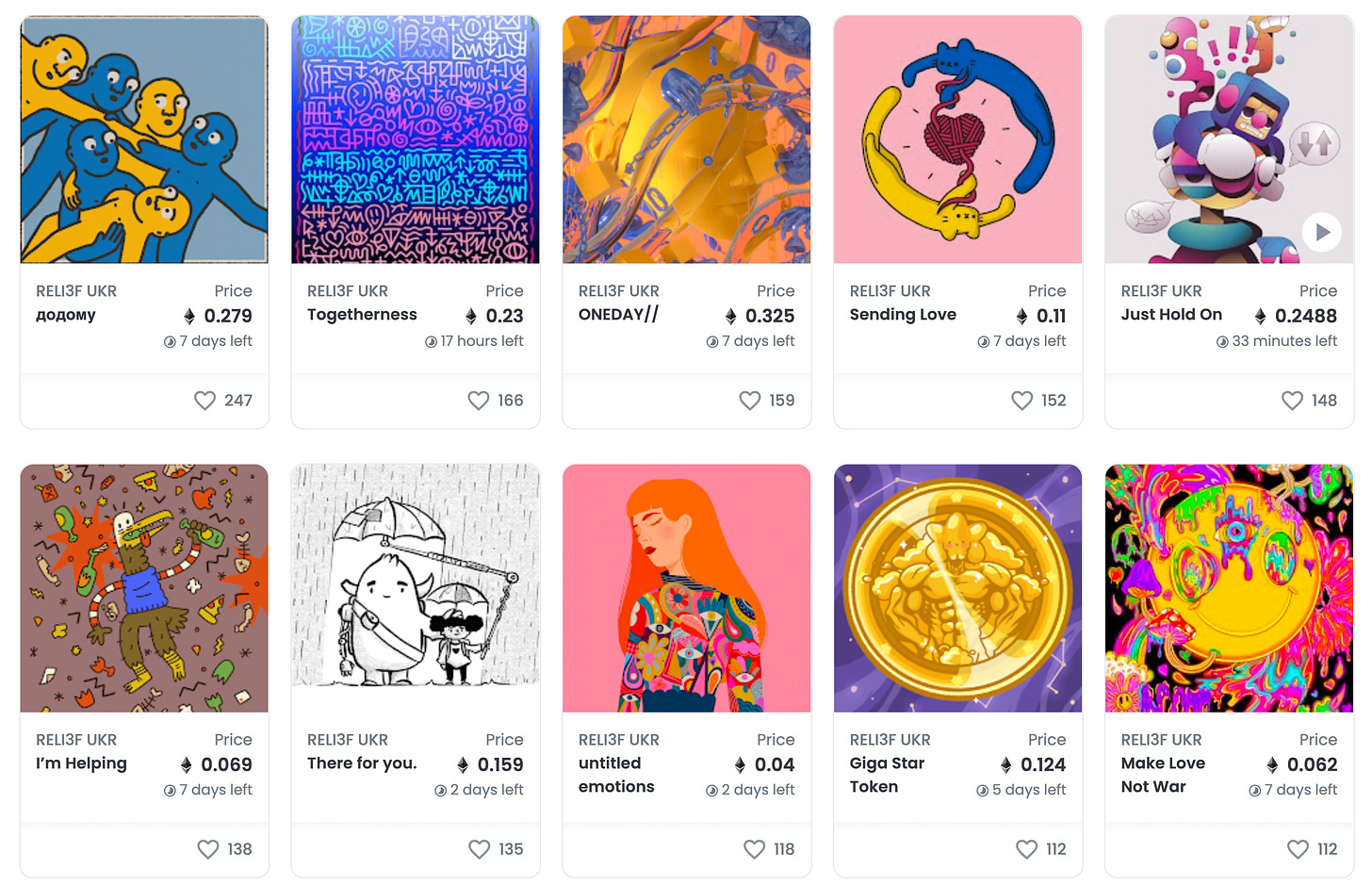
4) UkraineDAO
One last example to share is UkraineDAO. The creators of the project decided to auction off a 1/1 NFT of the Ukranian flag. Leveraging a tool called PartyBid, individuals could contribute any amount to the bid, and in return, receive a crypto token called $LOVE. $LOVE represents fractional ownership of the NFT, and is another way to symbolise an individual's contribution. It’s like a digital tax receipt which anyone can see a record of. In total, UkraineDAO raised over $6m USD.
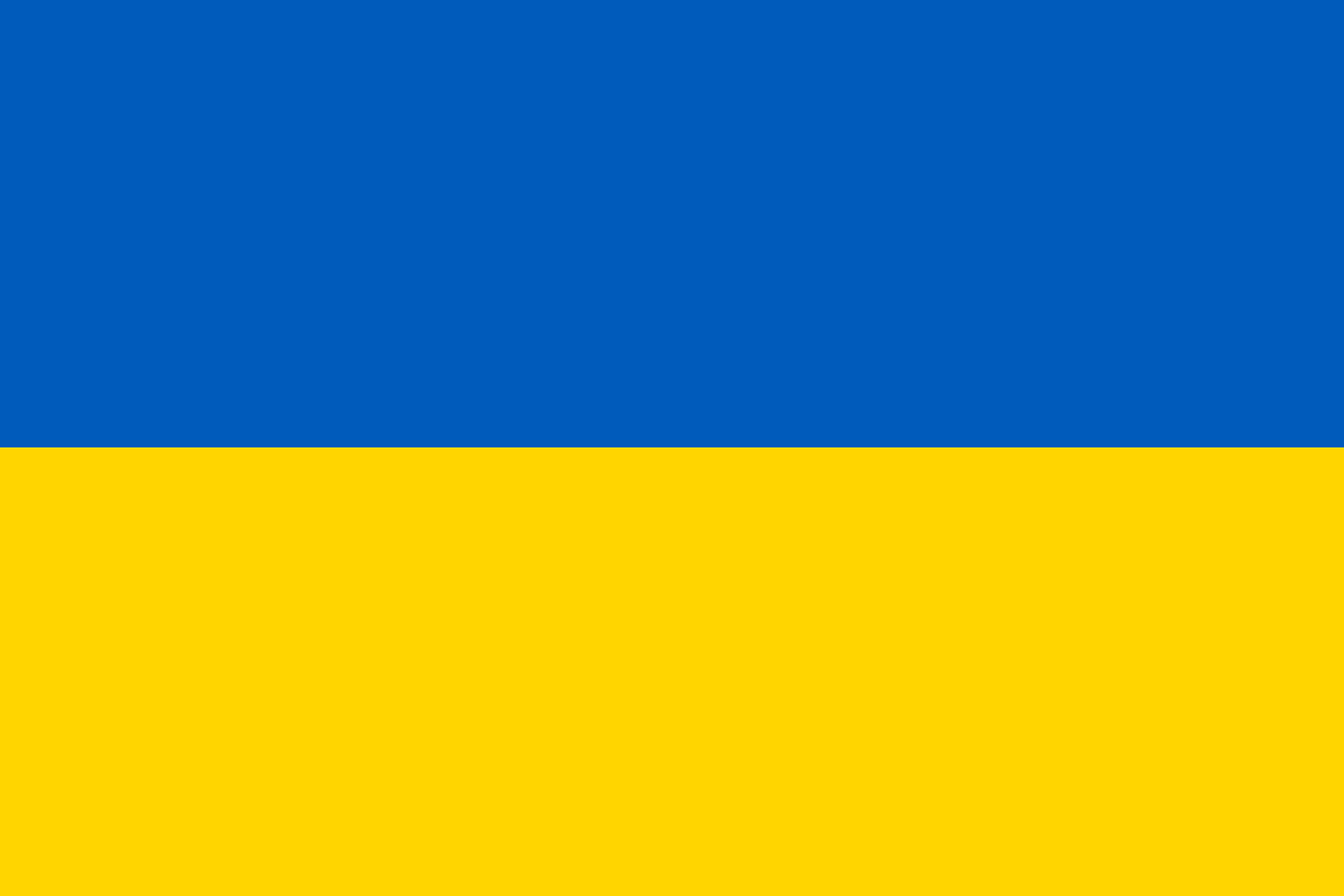
Ultimately, it’s been nice to see that beyond the hype and speculation, crypto can be used as a force for good. As we’ve seen, there are so many ways to fundraise and incentivise individual contributions. What stands out most to me is just how fast this has all happened. It’s been super fun and interesting to watch.



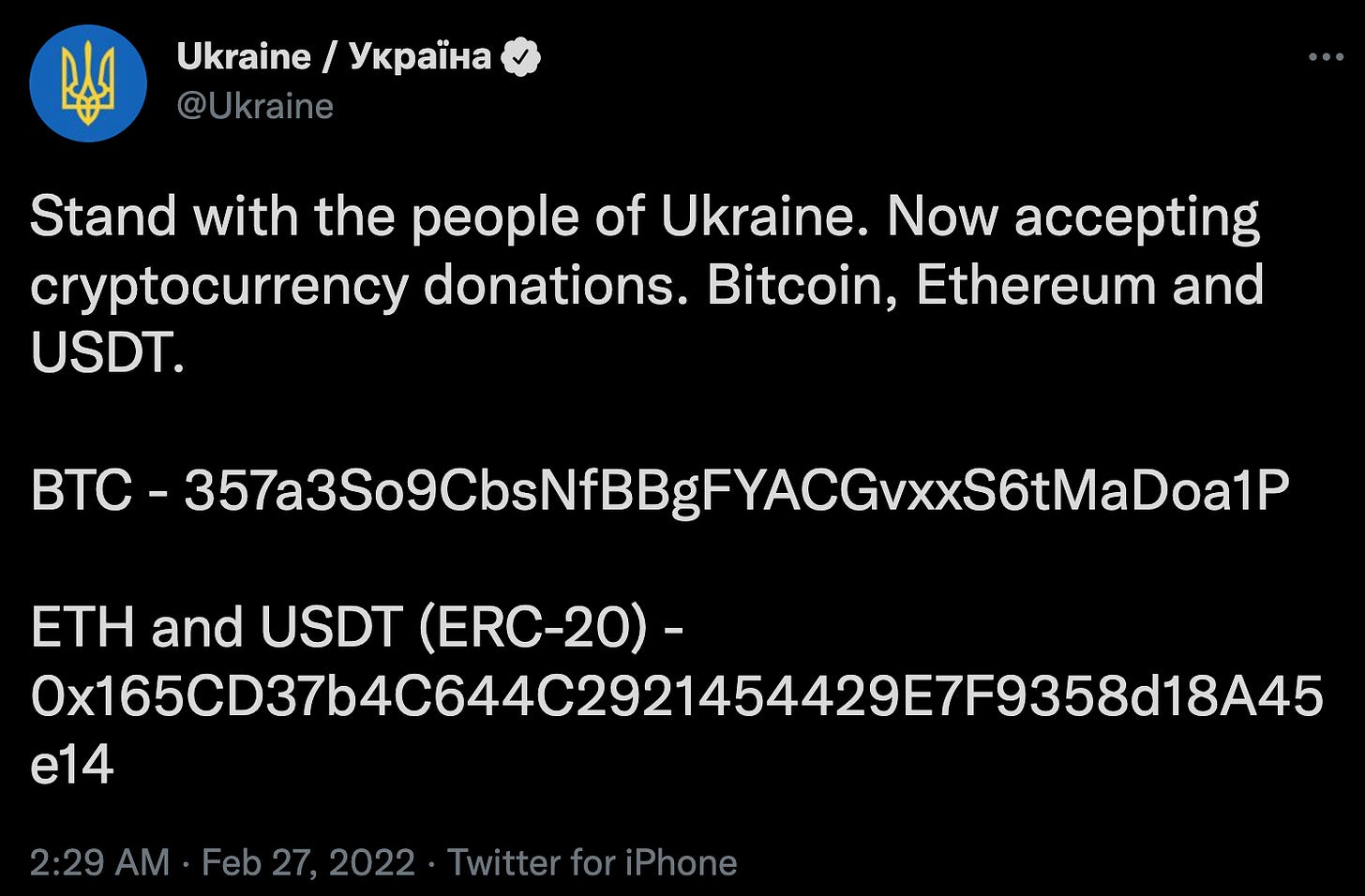
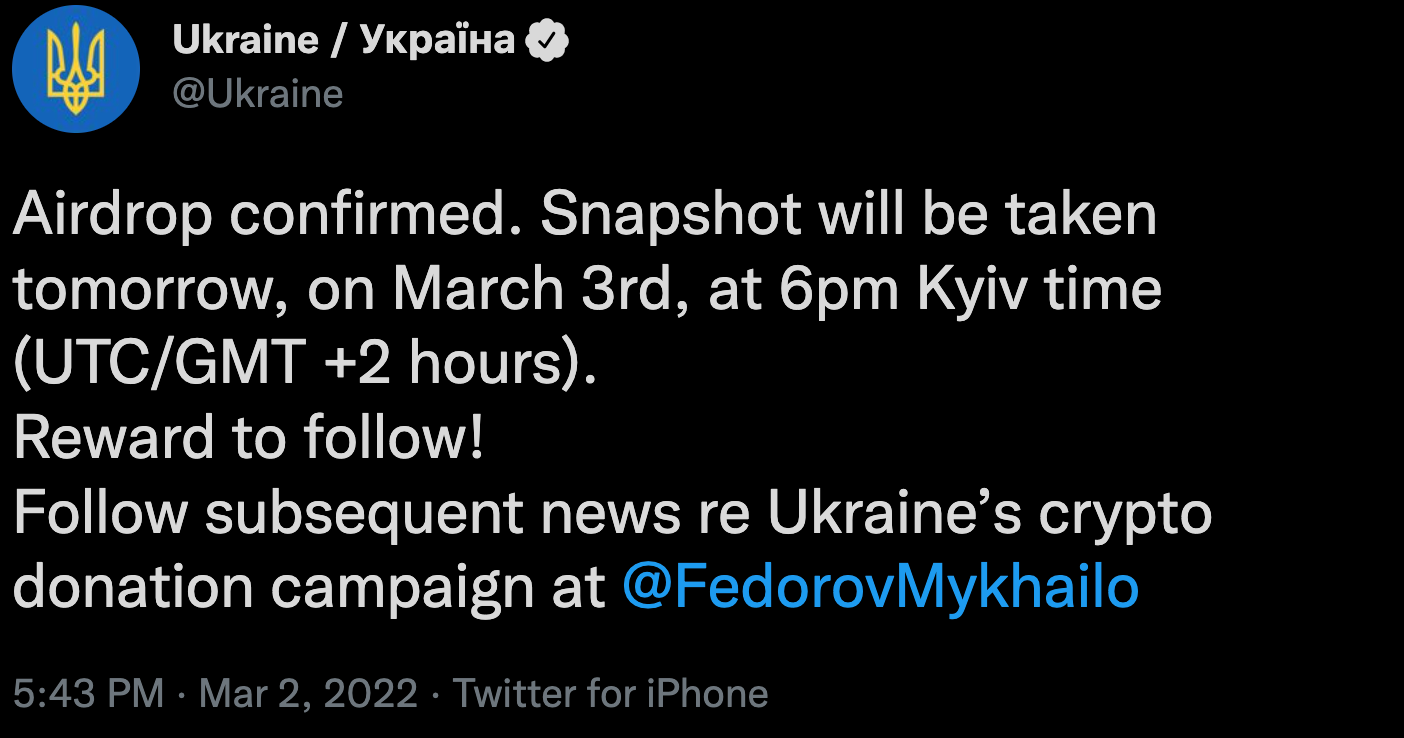
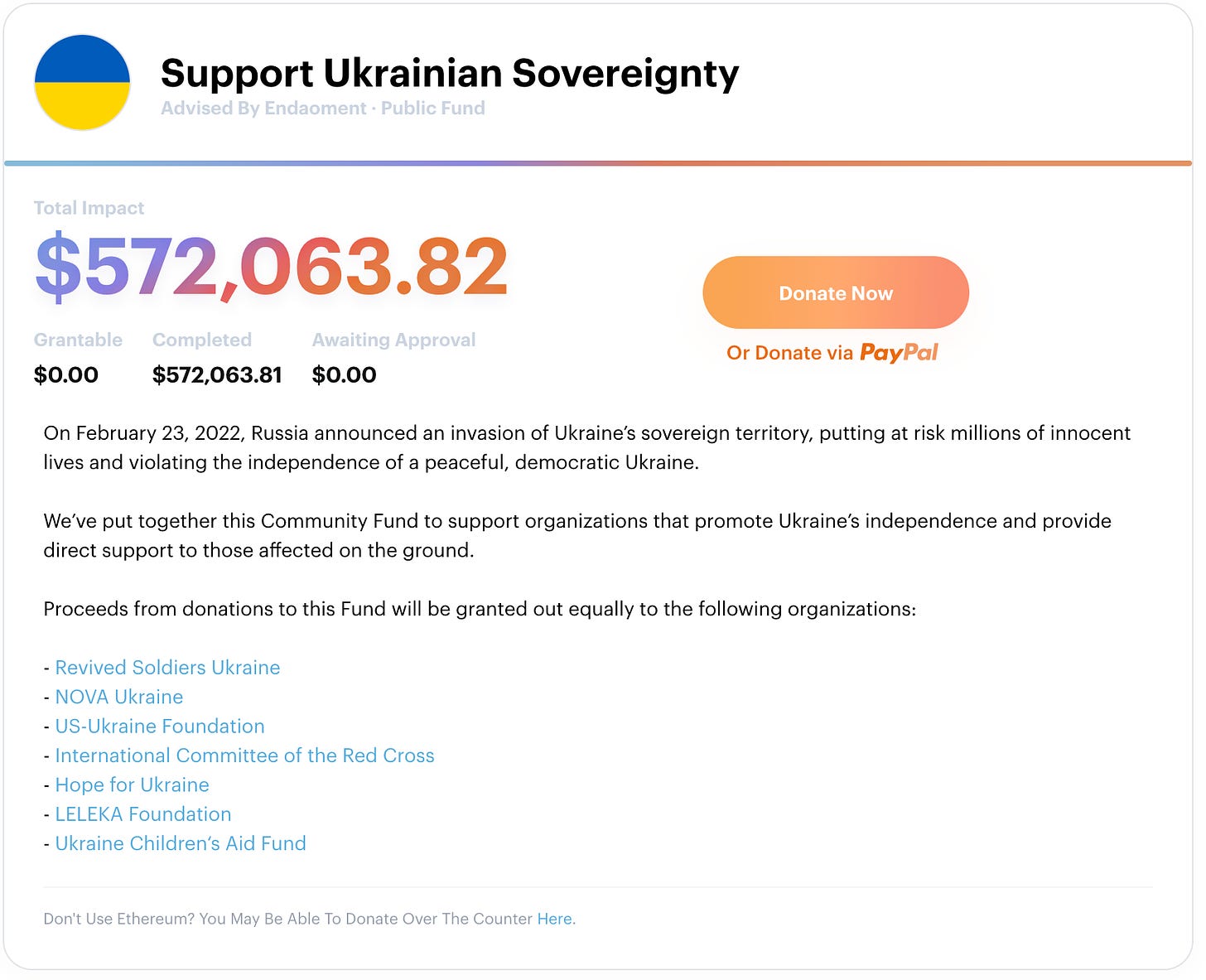
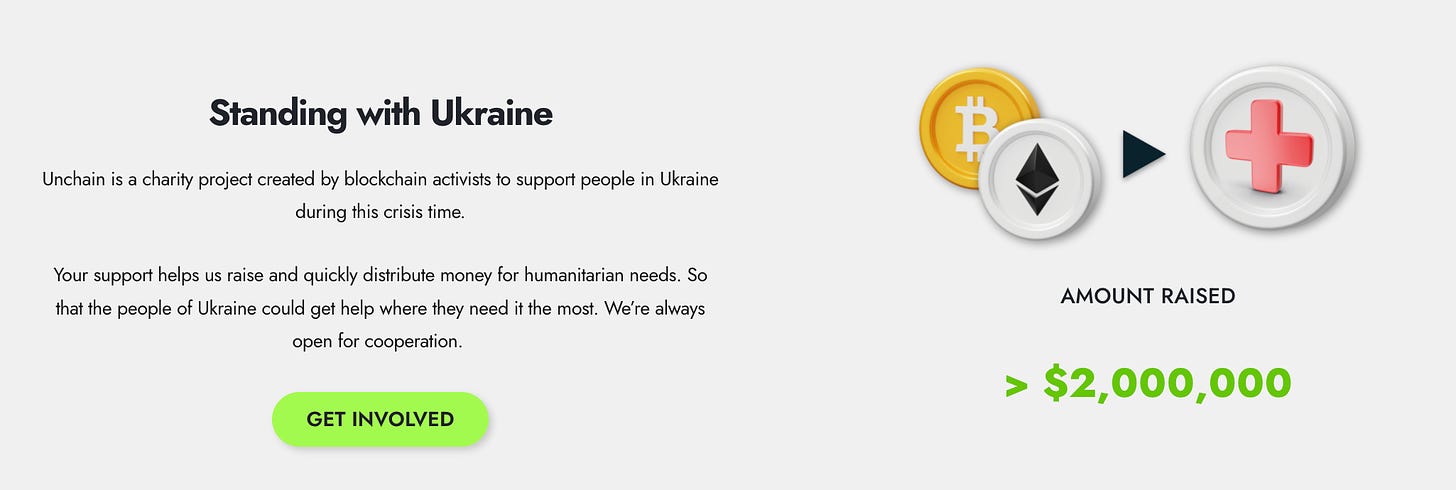
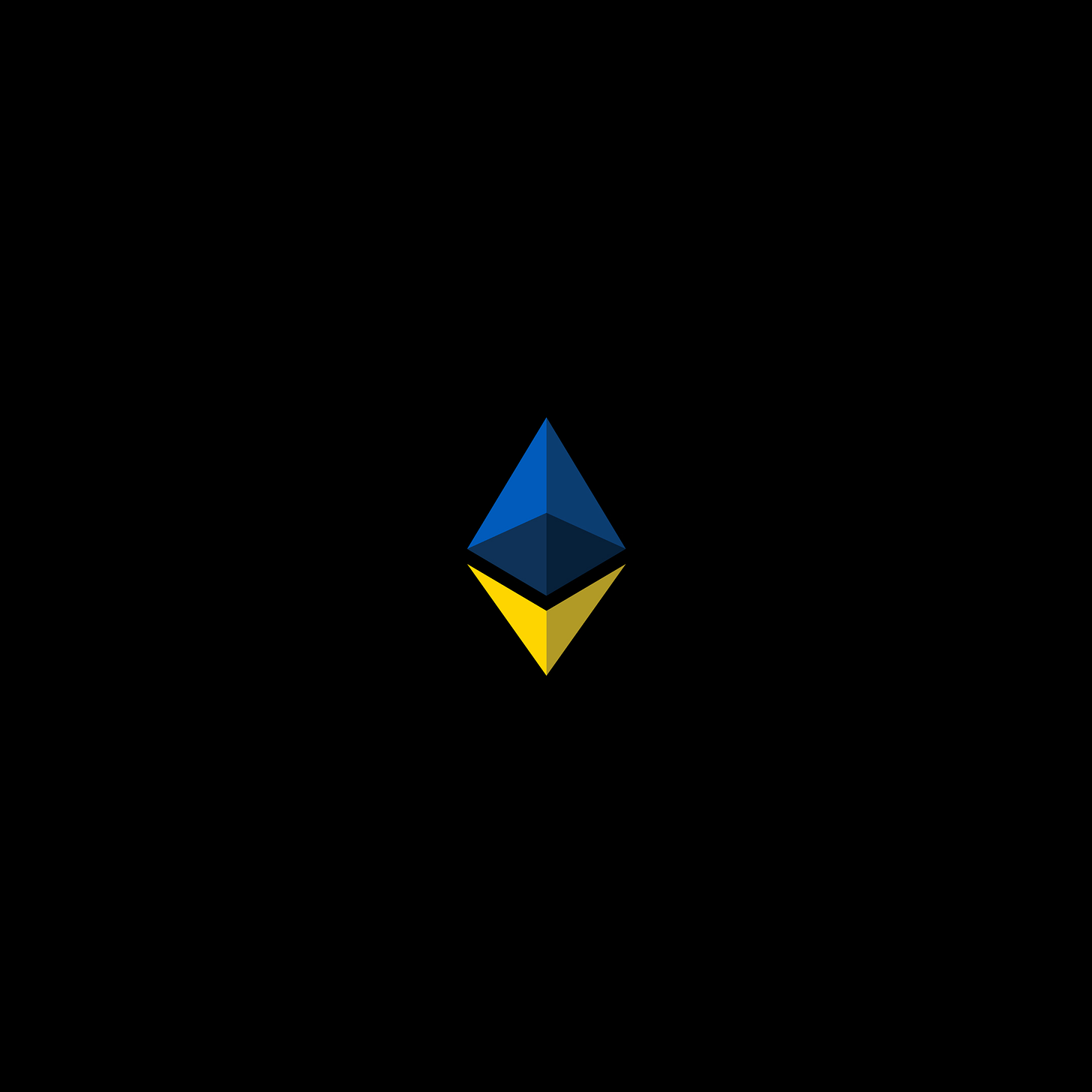
@ATXDAO of Austin Texas has created an NFT project to facilitate donations to Ukraine's wallet. It's quite gorgeous. https://mint.atxdao.com/ukraine